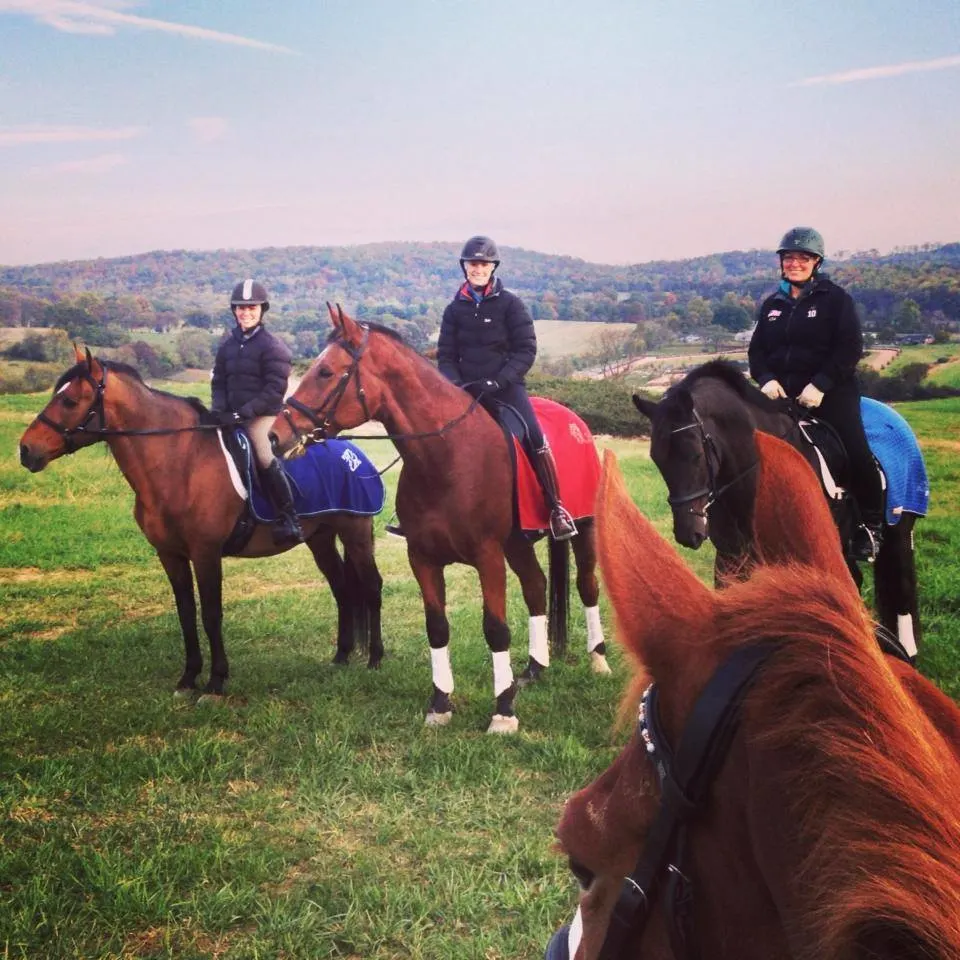Monday morning post-Regional finals, in years past, has been a day traditionally spent recuperating in the fetal position. But not this year.
Firstly, I had to return to the barn early to unlock the truck, which I had locked the night before with the keys—and all of my, Allison’s and Molly’s stuff—on the inside. Doh.
But more importantly, this year’s competition season is not ended by the Regional finals. This year we have a National finals, which both Fender and Kristin on Billy have qualified for, and so in two weeks we’re off to Kentucky for one more show.
And that means we’re not quite done.
So Monday was a day of laundry and cleaning, emptying and reorganizing to be able to pack up and go again in two weeks.
It also means that training goes on. Normally I like to give my horses a big long break after this show, so they’re not just training-training-training year ’round. I teach a lot of event riders, whose horses often get their shoes pulled and spend a chunk of weeks in the field, doing nothing.
For me, and I think for many dressage horses, weeks of NO work is counterproductive. Instead, I do lots of stretching for those weeks, lots of small transitions, making sure my horses are rideable and adjustable but not pounding on collection and expression. I want to keep the muscles soft and loose without beating up joints, as much as possible.
It’s also a nice mental break. Training is hard, particularly in two times in the future Grand Prix horse’s life—the time between training/first and second levels, where the young horse is really having to accept the aids and accept pressure and accept collection for the first time (this time always seems to coincide with the worst of the Teenage Angsty Twisties, resulting in lots of temper tantrums and whining); and the time between third level and fourth/Prix St. Georges, where the collection gets REALLY HARD, with canter pirouettes and, usually, the idea of half-steps coming into play.
ADVERTISEMENT
Midge, as a wonderfully finished product, went through both those stages, but the second was way worse. He is SUCH a powerful horse that it took years to get him organized to come back from bigger canter to normal-sized canter; he spent two years at training Level, then skipped first and second levels and sat out one show season to then come out at third. And the amount of absurd bad behavior between third and Prix St. Georges was significant. But as he’s matured, he’s gotten SO sensible and rideable. He’ll still spook at scary things, like chairs and plants, but I’d honestly put anyone on him. The more pressure you put on Midge—more leg, more drive, more hold—the better he gets, and he never gets silly.
Fender’s in the latter category, the one between third and PSG, and to his great credit, the last few weeks have been amazing. Honestly, I think we went to the event a few weeks ago, and Fender looked back and saw my tails and went, “Oh crap! I’m an FEI horse! I’d better get my @#$&! together!” Because he’s been super, making great strides towards being able not just to do all of the movements at Prix St. Georges, but do so in a fluid and organized manner.
Johnny’s in the former, between training and second, but he’s really incredible. He copes with pressure better than anyone I’ve ever ridden. Just for fun every now and then I sit on him like he’s Midge, driving out this HUGE trot, or gathering up the canter like he’s ready to do a pirouette. It doesn’t work; of course he’s too young to sustain anything like that for terribly long. But never EVER does he complain, kick out or back down. Now, running off with his head in the air is a total possibility, but I can live with that! And there’s a fair amount of spooking at very scary things like chairs and plants. But oh boy, he’s going to be so incredible!
That ability to take pressure is, I’m coming to appreciate, the No. 1 most important thing in determining whether a horse is going to ascend the levels. Gaits, conformation, type—of course these are important. But we all know a freaky little weirdo horse who defies his paperwork and goes onto success in something he shouldn’t—my little Arabian buddy War Lhord, or Midge, or the Quarter Horses and Apploosas or Whatevers that go to FEI—as well as the fabulously-bred horses who top out at the lower levels, who just don’t have the je ne sais quoi to be on top.
It’s the pressure, the ability to put leg on and drive like hell and have the horse not go bananas. It’s the ability to gather to the point of being on one spot and not have horses get panicked and claustrophobic. And this quality is ABSOLUTELY taught, in part. Every talented, brilliant top-level horse has, at one point in its life, been a total turd.
If anything, it’s that that teaches them coping skills. And the same thing that teaches them how to cope with half-steps and pirouettes is the thing that teaches them to cope with, heaven help us, plants and chairs.















